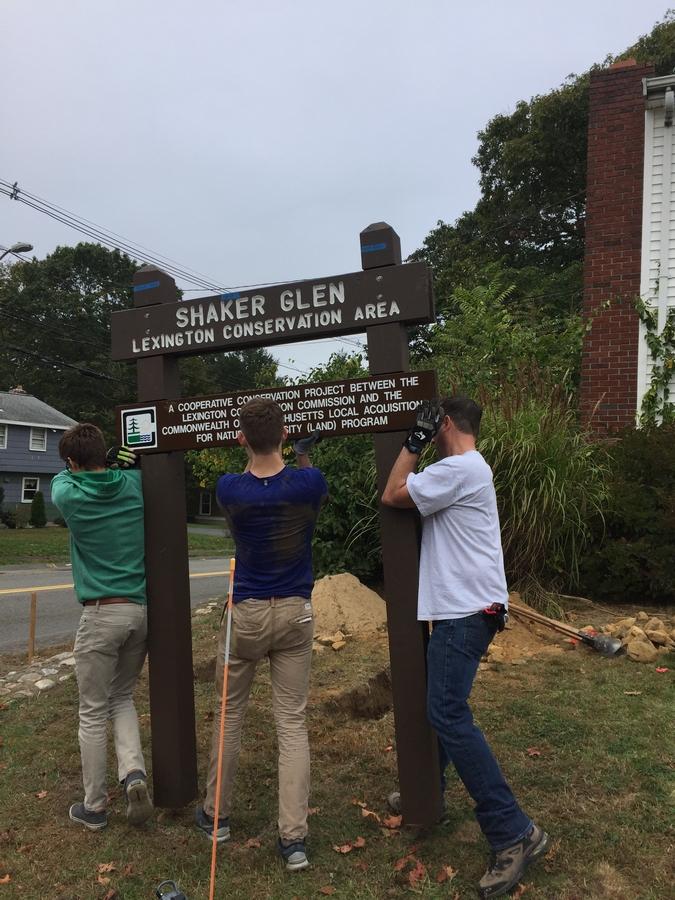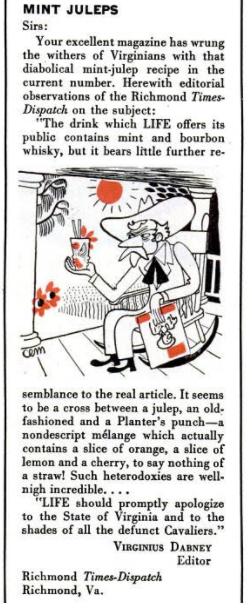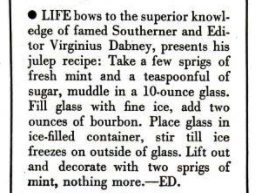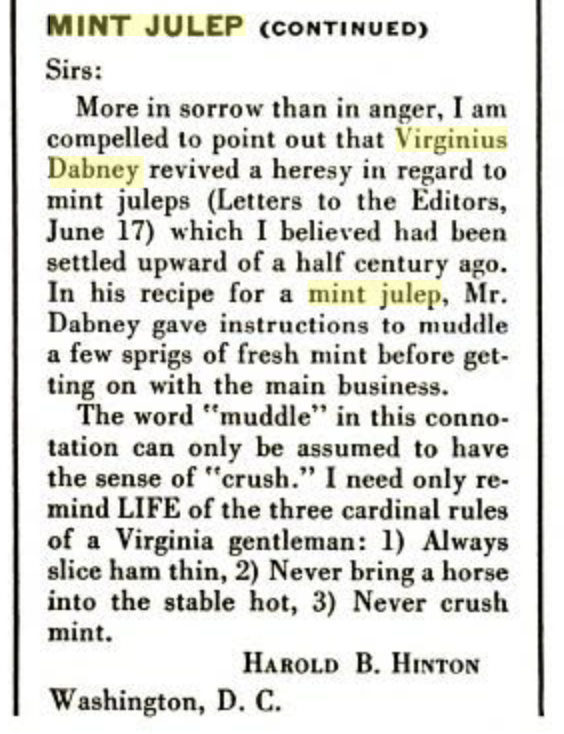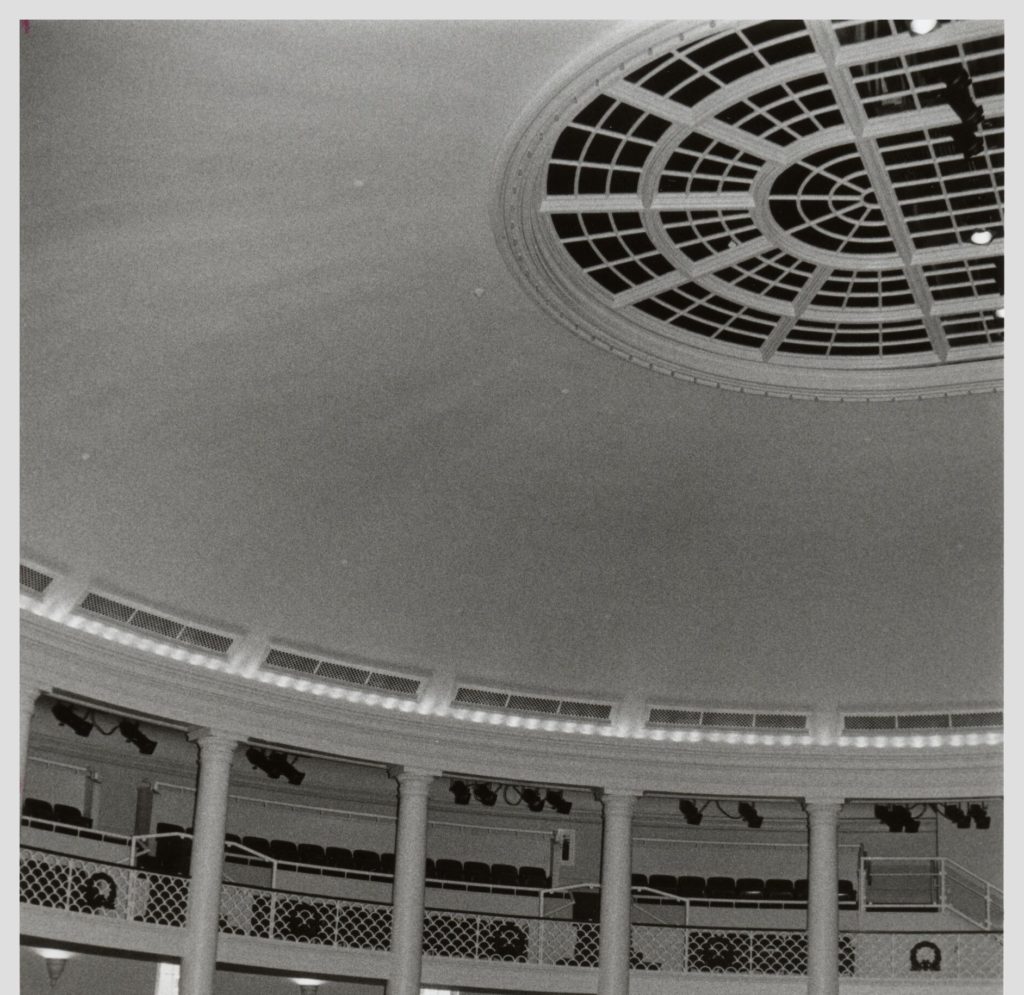
I read with interest a UVA Today article about Andrew Ashcraft, a fourth year architecture student who has had the privilege of exploring attics and other hidden spaces at the University as an intern in the Historic Preservation team. Having been an inveterate explorer of the University’s nooks and crannies myself (with a particular fascination for Old Cabell Hall and the roof of Clark Hall), I envy Ashcraft his job. However, one paragraph caught my attention:
“His favorite view so far has been from the attic of Old Cabell Hall, where he could look down through an ornate false skylight into the building’s grand two-tiered theater.”
It may be a “false skylight” today, but it certainly didn’t start out that way. The evidence, as always, is the University’s collection of the photographs of Rufus Holsinger. In a collection of views of the Grounds dating to 1914 we get the photo below, showing the view of the stage but also the ceiling above:
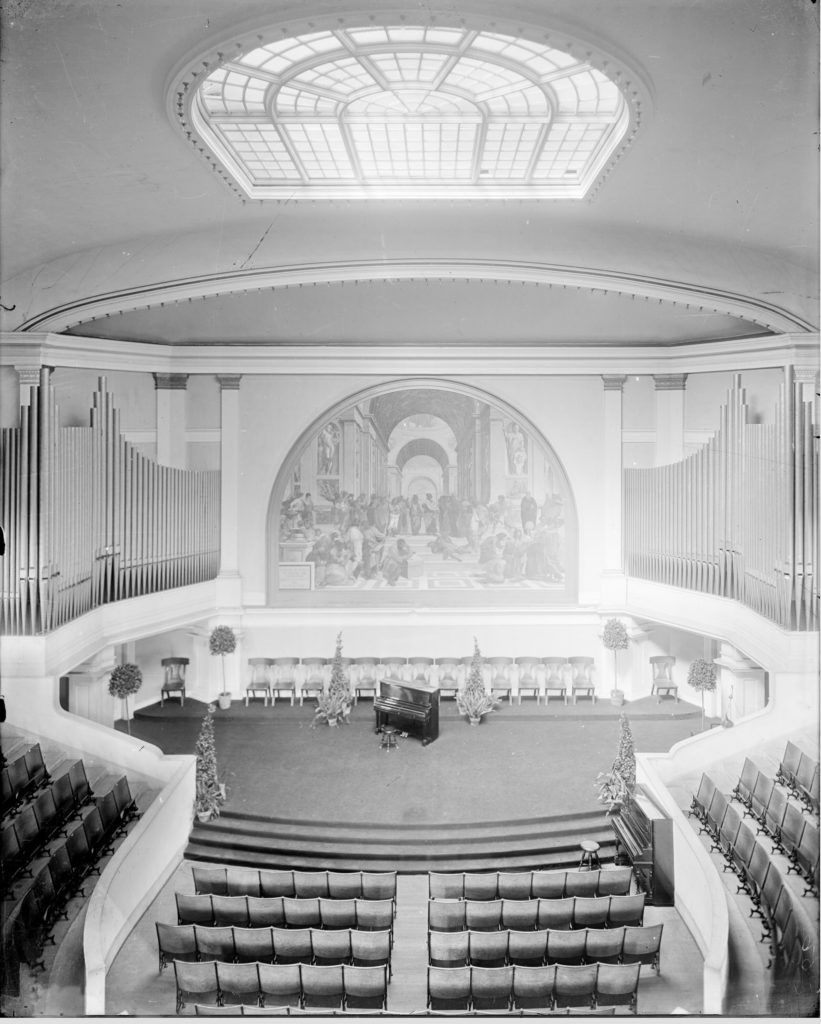
That sure looks like a working skylight to me! The Library’s online exhibit on the work of McKim, Meade, and White (the designers of Old Cabell Hall) indicates that the skylight was eventually enclosed “to accommodate modern lighting equipment,” and from the stage you can see the lighting in the space that would originally have let natural sunlight in.
The University has a small tradition of enclosing skylights, apparently, or at least doubling them up. As an undergrad I learned from some of my older neighbors how to enter Clark Hall (originally the home of the Law School) at night and climb up to the dusty hidden room enclosed by the outer skylights and the inner skylights of the building. Yes, there are two layers of skylight. I haven’t been able to determine if this was the original design or a concession to weatherproofing. (You can see a hint of the double-layered design in this photo.)

